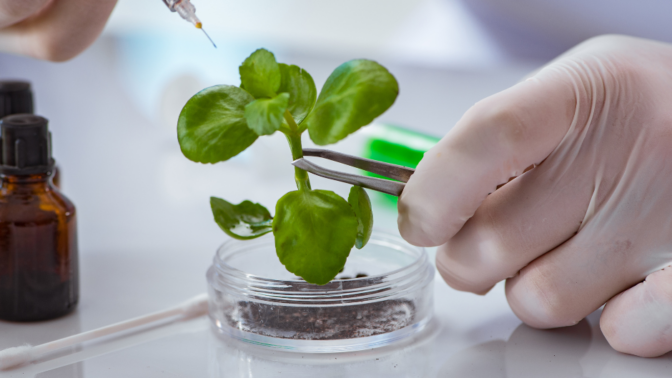IB Biology IA Marking Criteria – How To Use It For A Top Score

As an IB Biology student, you probably already know that your final grade isn’t just based on the final exam. A full 20% comes from your Internal Assessment (IA). Naturally, you want it to be a success, and this is why you need to know your IB Biology IA Marking Criteria.
Have you heard people say “If you don’t know where you are going, how do you know if you get there?” The saying also applies to your Biology IA. If you don’t know what examiners are looking for, you won’t have a chance of getting the highest grade.
We are here to help you with that. At TutorsPlus, we’ve put together a comprehensive guide on the IB Biology Internal Assessment marking scheme (takes effect in 2025) so that you can aim for a top score.
Biology IA Marking Criteria Overview
Let’s start with the basics. Your IA is marked out of 24 points, spread across the following four criteria:
- Research Design (6 marks);
- Data Analysis (6 marks);
- Conclusion (6 marks);
- Evaluation (6 marks).
You can learn more about these criteria and the IB Biology IA mark scheme from the official IB Biology guide (the first assessment in 2025).
IB Biology IA Marking Criteria Breakdown
Below, we’ll break the Biology Internal Assessment criteria down one by one.
Research Design
To gain 6 points for Research Design, you need to have a well-thought-out and planned research.
It all starts with a descriptive title that captures the essence of your experiment along with a clear research question. It is also necessary to provide some background about what motivated you to choose this topic. This can be an observation, experience, or story from your life that sparked your interest.
If you struggle to come up with an original research question, we’ve compiled a list of 30+ Biology IA topic ideas.
Besides the question, you need to state your hypothesis and take care to explain how it is grounded in existing research. You need to cite at least 5 sources to back up the rationale for your hypothesis.
For many students, one of the most difficult parts is to explain their experiment methodology. We suggest that you start with an image or diagram of your experimental apparatus and list all equipment and materials you used. This also includes the exact amounts, sizes, models, etc. Then, write out each step of your procedure like you’re giving instructions to another student to replicate your experiment.
It is also essential that your IB Biology Internal Assessment specifies every type of variable – independent, dependent, and controlled. Along with this, you need to provide the exact units of measurement you will use.
Additionally, be sure to note how you controlled variables and made systematic manipulations to isolate your independent and dependent variables. You should conduct at least 5 repeats of your experiment. In the process, carefully describe any errors, discrepancies, or difficulties you encountered. Remember, your examiners require a scientifically rigorous procedure.
If there are any kind of concerns associated with your investigation (environmental, ethical, safety, etc.), explain your attempts to minimise the issues.
Data Analysis
This criterion deals with data collection, procession, visualisation, and interpretation.
To meet this IB Biology IA criterion, you need to introduce the quantitative and qualitative data you’ve collected during experimentation. Start by explaining how this data helps answer your original research question. Then describe how you recorded and processed the obtained data.
Show your workings – all calculations must be mathematically accurate and presented in an organised manner. Don’t forget to include a sample calculation in order to walk an evaluator through your method of data processing step-by-step. Remember, there shouldn’t be major omissions or inaccuracies since they may prevent you from coming to the right conclusion.
Visual representations are vital in Biology IAs as well. That’s why you should include properly labelled graphs, charts, and tables displaying relations between variables. There must be informative titles, axis labels with units, legend if needed, and maximum/minimum values. Also, make sure to visually convey any uncertainties, errors, or anomalies in your data where relevant. You can even provide brief conclusions for such instances.
Conclusion
In this section, you need to interpret your findings. To begin with, refer back to your research question – did your findings align with or contradict it? Make sure to base your conclusion on the data you obtained and analysed.
Also, to get all 6 points for the Conclusion criterion, you should compare your results to the well-established research or experiments, specifically, those published in scientific literature. To do so, you must appropriately cite these materials so that your examiners can trace them. The reference list should include at least 5 relevant sources in alphabetical order, consistently formatted according to the citation style specified by your school.

Evaluation
This crucial section is where you reflect on your findings.
First of all, you need to speculate thoughtfully on potential reasons why your hypothesis was supported or disproved based on scientific principles. Try to identify limitations, sources of error, and weaknesses in your experimental design and methodology. This could be insufficient precision of measurements, methodological weaknesses, confines of the system, assuming you’ve made, etc.
Whatever the reasons, discuss them and suggest ways to improve your experiment if you had a chance to do it again. And don’t forget to explain how these modifications are able to improve your methodology or experimentation.
Remember, the evaluation criterion is supposed to show the examiners that you can think critically.
Book free trial with our certified IB Biology teachers today
100 % of tutors are certified teachers and examiners
The Overall Quality of Your IB Biology Internal Assessment
It goes without saying that your investigation should be easy to understand. That’s why you must break it into logical sections with descriptive headers. Don’t forget to check out our detailed guide on how to write Biology IA, to know more about its design and format.
Be sure to carefully read your Biology IA before you submit it. Although there is no longer a Communication criterion, spelling and grammar mistakes, unclear structure, insufficient or wrong labels, and other avoidable omissions can cost you valuable marks.
Overall, your individual research paper must contain no more than 3,000 words. You should specify the exact word count (excluding the front page, the list of references, and graphs) at the beginning of your report.
IB Biology IA Marking Criteria – If You Need Extra Help to Nail Your IA
There you have it – our comprehensive breakdown of the IB Biology IA marking criteria for a top score!
Needless to say, it is a lot of work to design, conduct, and write up your experiment. Don’t be afraid to get help along the way. Working with an experienced IB Biology tutor is a great way to refine your skills and take your IA to the next level.
A tutor can provide guidance on developing an innovative research question, perfecting your methodology, analysing data effectively, and crafting a logically structured, scientifically accurate paper. At TutorsPlus, we have a team of talented tutors who have supported many students in achieving top Biology Internal Assessment scores. Feel free to contact us – 41 022 731 8148 or – if you need that extra boost of expert guidance for your Biology IA success.
By Sara Lloyd
Sara has been an education consultant for TutorsPlus for 15 years, and is an expert on international IB education. She is also a parent of two lively children.















